St Anton: leisure by the lakes
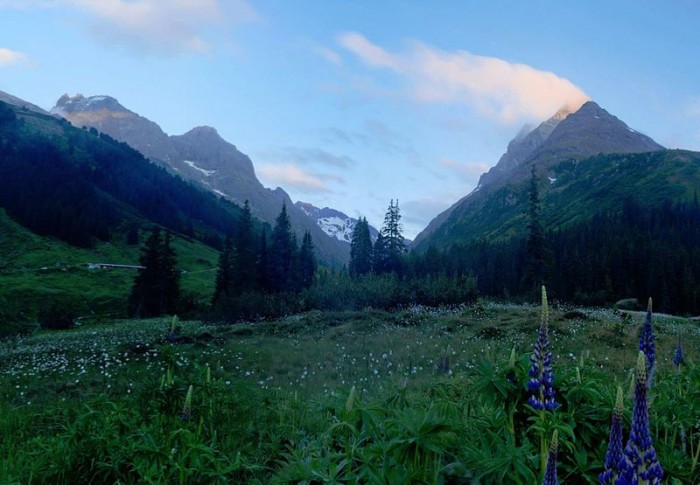
If you want to go on a holiday that’s peaceful, where better than a lakeside resort? The waters gently lapping provide a calm background to any vacation, especially if you decide to visit the small Alpine resort of St Anton in Austria. One of the best places to go on a Lakes and Mountains holiday is St Anton, but why is it the case?
Being so close to some of Austria’s most impressive peaks, St Anton is seen as a mecca for keen walkers. Meanwhile, when the snow melts, the village and the surrounding area look stunning during the summer months. It lies within the Verwall Valley, and is close to the lake known as Verwall See, which should be seen to be believed.
A treat for your feet?
Although there are a number of routes to choose from that start and go through St Anton, one that stands out is the Verwall Valley walk. Krissy Sinclair, Austria Resort Manager for Inghams explains why it’s so interesting:
“Why not start your week with the Rosanna River walk or the Verwall Valley walk, both moderately flat. Along the route take in some wildlife, deers have been regularly spotted, and there is a variety of wild flowers and herbs, from wild orchids to wild miniature strawberries”, she said.
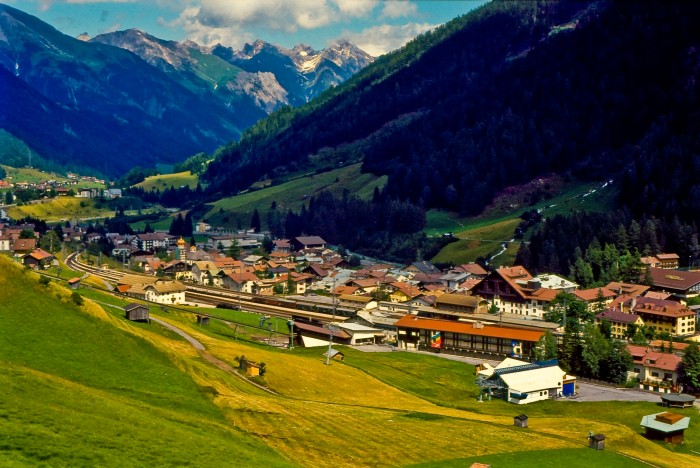
Like the lakes
Verwall See is arguably the best natural attraction within a short distance of St Anton. It leads up to the Rosanna river, provides plenty of opportunities to take great photos and, in the summer, it’s a great place to go canoeing or indulge in a spot of fishing.
If you find that you’ve explored St Anton itself with a few days left to spare, there’s plenty of other neighbouring towns and cities to visit such as Innsbruck, which is reachable from St Anton by train in less than an hour!
Underrated Arrowtown
When I was planning my trip to Queenstown, a few of my friends said I should flag Queenstown and head straight to Arrowtown. As a New Zealander, I consider myself quite knowledgable on all the must-see places in New Zealand, but I’d never heard of Arrowtown. I decided to trust their advice and split my holiday between Queenstown and staying in the best apartments in Arrowtown.
And it was a great decision.
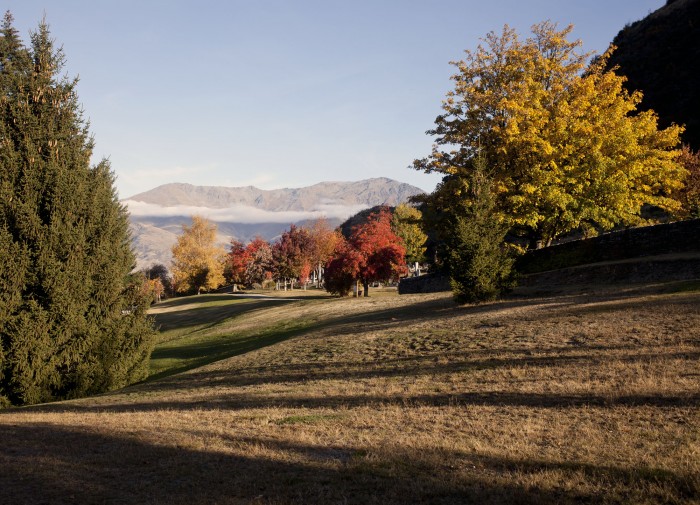
Arrowtown in Autumn is absolutely lovely; the trees shine brightly in hues of gold through to fiery red. The town itself is ridiculously cute, with a famous candy store and a number of cute cafes to spend a lazy day in. It feels a world away from the hustle and bustle of busy Queenstown, allowing my partner and I to really enjoy a few days of quiet.
There’s lots of great things about Arrowtown that make it a good alternative to Queenstown – first of all, it’s only around a 15 minute drive from Queenstown meaning that you can stay in Arrowtown, which is considerably cheaper than Queenstown, and then pop over whenever you want.
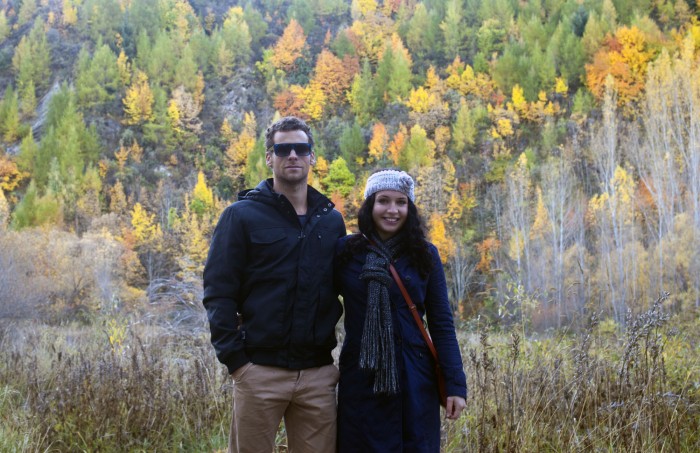
Arrowtown is also super close to some of the best ski fields in New Zealand, including Cadrona, making it a great base for a skiing or boarding trip.
There are also a number of stunning walking tracks you can go on, as well as some equally impressive cycling tracks. While we were walking around the outskirts of Arrowtown, I couldn’t help but feel as if the scenery was straight out of a painting.
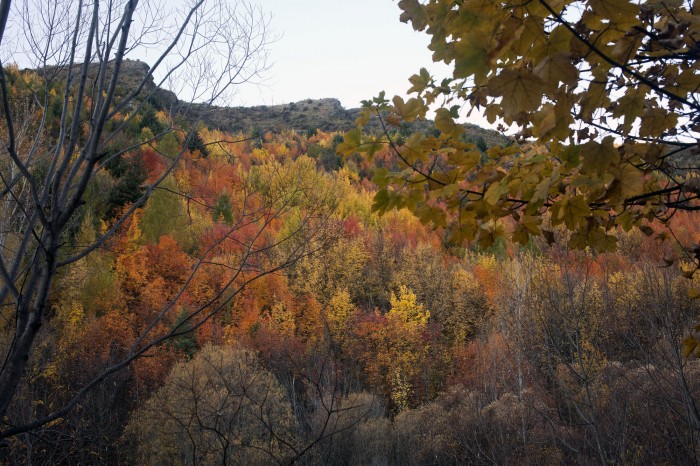
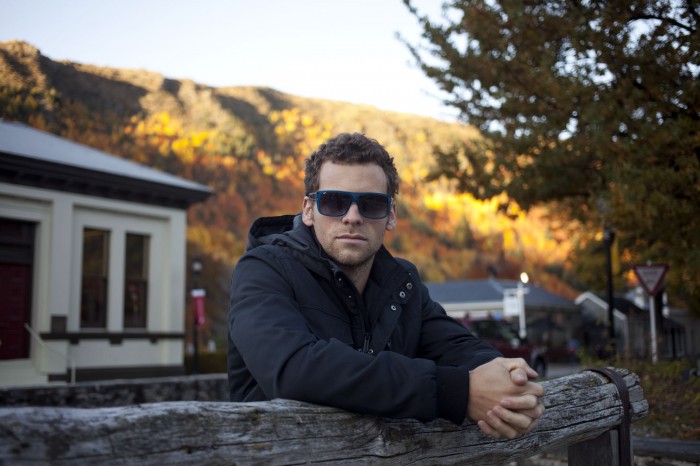
We only set aside two days for Arrowtown but I wish I’d budgeted more. I could have easily spent a week exploring the beautiful scenery nearby and the next time I visit I’ll definitely bring my bike so I can explore some of the tracks in the surrounding area. Arrowtown is also lacking in the pretentious feeling that Queenstown has. As an old mining town, Arrowtown has this warm and charming feel to it. Because it is a lot quieter than Queenstown, I personally found it a lot more relaxing.
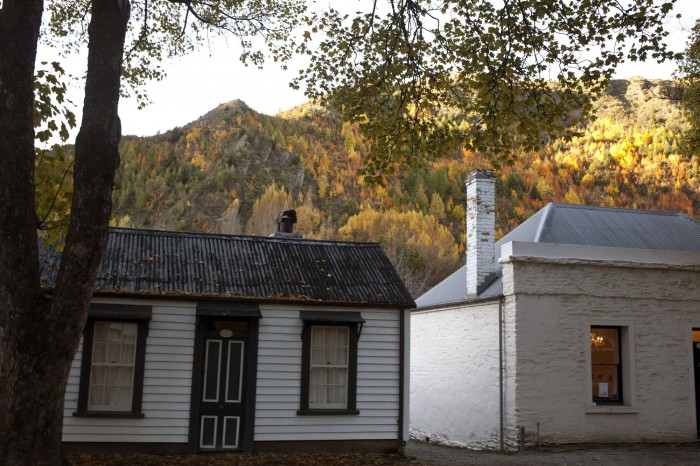
Arrowtown definitely ranks as one of the cutest places I’ve ever visited and I think it’s a place with universal appeal: it’s perfect for couples wanting a romantic get away, families with kids who want somewhere quiet and comfortable to explore and friends who are looking for a fun weekend away. If you’re planning to visit the south island of New Zealand, you must include at least a few days in Arrowtown to your itinerary.
Where’s the cutest place you’ve ever visited?
How to Avoid an Accident on Holiday
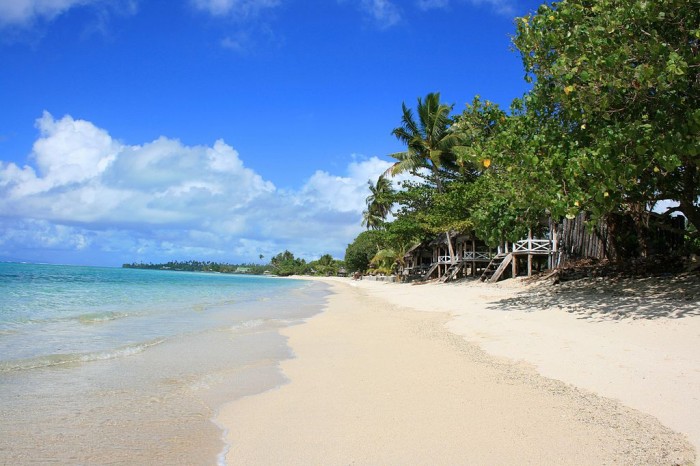
If you’ve booked a holiday this summer, the last thing on your mind will be accident and injury. No one expects the worst to happen, but even the most diligent holiday-goers can experience problems whilst they’re meant to be enjoying themselves.
According to a survey by First4Lawyers, 42% of people admitted to experiencing injury whilst on holiday, both abroad and in the UK. The places and circumstances in which you may be injured can be wide and varied so if you’re hoping to avoid injury on your next holiday, beware of the following places – these tips will help you learn how to avoid an accident on holiday.
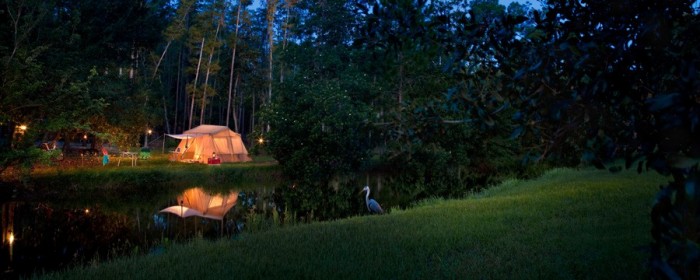
Campsites
Many of those interviewed had experienced injury whilst camping which is really no surprise. Insect bites and minor burns are just the beginning of things, whilst many more serious injuries are also possible.
Avoid building fires and cooking if you’ve had a bit to drink, and make sure you have plenty of camp side lighting equipment to avoid falls.
Planes
Nearly two billion people use commercial airlines every year, so it should be no surprise that lots of injury can occur here. Turbulence, tripping, food poisoning and anxiety attacks are just a few examples of what can happen whilst traveling in the air.

Supermarkets
You may be surprised how common supermarket injuries are whilst on holiday, but given the relaxed attitude of many holidaymakers, it’s not all that strange. Trips and falls are the main contributors to injury here, with flip flops and wet shoes holding some responsibility.
Hotels
Stairways, balconies, parking lots and bathtubs are the main perpetrators of hotel injury, with most of these places providing insufficient safety guards against trips and falls. In rarer circumstances, food poisoning and other guests can also provide a form of injury should you get unlucky.
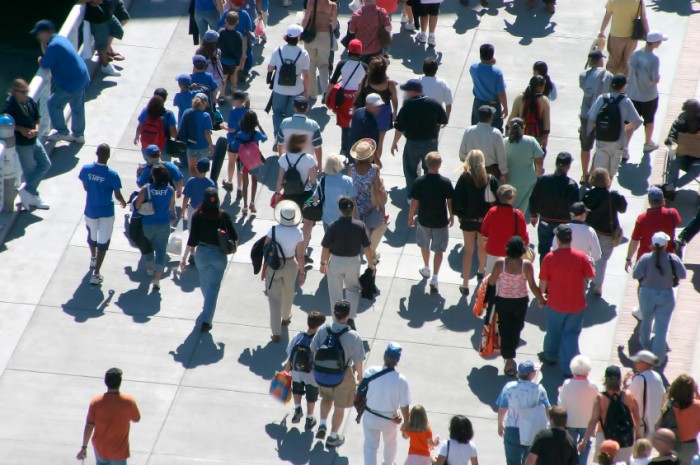
Sightseeing
Sightseeing is one of the activities where you are most likely to be injured; with nearly 20% of those surveyed admitting an injury during this time. It’s a pretty broad activity so the range of different injuries can be incredibly varied, with anything from a fall to food poisoning to dehydration.
Ensure that you are paying attention at all times when sightseeing – roads can be dangerous and crowds can get a little hairy.
These are my tips for how to avoid an accident on holiday. Do you have any tips?
What Defines the Florida Keys?
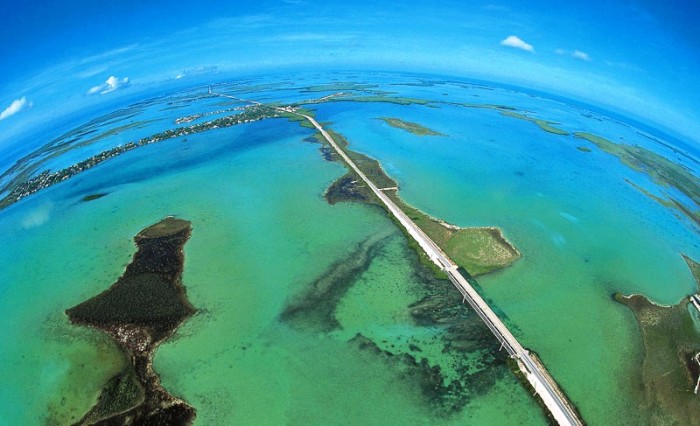
This 126-mile stretch of limestone islands, floating on the crystal clear waters of the Gulf is sometimes called America’s best-kept secret. Florida Keys was once only accessible by boat, these islands are linked to the mainland and each other by the Overseas Highway. Several of the islands have been develop into holiday resorts whilst others have been protected for their natural beauty.
Nearby, Yet a World Away
Hiring a car within Florida, makes the Florida Keys easily accessible as they lie just an hour’s drive south of Miami. One of the charms of the Keys is the close proximity of such a relaxing and beautiful place. All the keys share the blue green waters and laid back atmosphere of a tropical paradise that call visitors back time and again. There are protected waters and marine reserves where eco tourism is making its mark with diving and snorkeling to see the superb variation of marine species.

Keys Dining
With such well-stocked waters surrounding them, fishing has always been part of life in the keys and much of the cuisine is seafood based. Conch was once so common in the keys that this large mollusc with the distinctive shell gave its name to the locals – residents are still called Conch today. Another favourite are the stone crab claws served October to May in 3 sizes, medium, large and jumbo. The sweet tender flesh is very popular. Easier to eat than its Maine relatives, Spiny Lobster has an enormous tail full of tender white meat, although no claws and is available all year except June and July. Key West pink shrimp are available over the winter months and the fish of the day could also be Yellow tail Snapper, Mahi Mahi, Grouper, or Yellow fin tuna. For desert of course, first choice is always key lime pie.
Key Options
There are 30 inhabited islands in the keys and the highway connects 43, but there are over 1700 islands in total.

Key West is the furthest south you can go and is party capital of the keys with bars and nightlife to delight even the toughest party animal, but there are still plenty of time and space to sit and watch the sun go down over your rum cocktail. Key West was also the home of Ernest Hemmingway for over a decade and he penned some of his most famous works here. His home is now a museum and a fabulous place to visit.
Key Largo is the first island you reach on your drive from the mainland and is a great base for diving as it has the John Pennekamp State Park, the first underwater national park in the US, which provides superb diving and snorkeling.
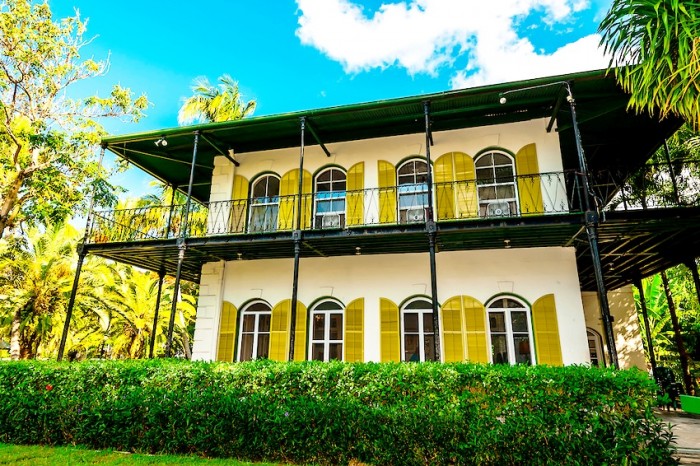
If fishing is your thing then head to Marathon in the middle keys where the traditional way of keys life is celebrated in daily life across four of the islands that make up the community.
Wherever you head you can be sure of a chilled time in clean, beautiful surroundings with a wealth of options if you do decide you have time for anything more strenuous than sunbathing.
Staying in Apartments
I’m launching a new series called The Ultimate Guide to Long Term Travel – I want to include things that I know now by habit, but had no idea about when I started out traveling. This guide will help you travel long term for cheaper, but also just help you save money in general on trips with tips and suggestions I’ve learned during the past 2.5 years.
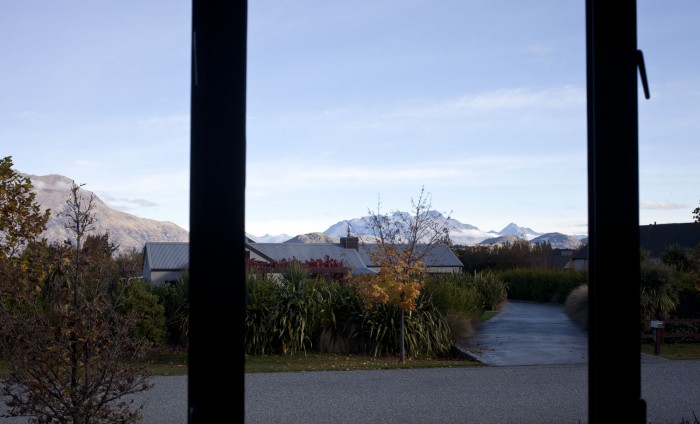
Recently I went on a trip to Arrowtown and Queenstown with my partner. A good portion of my travels, thus far, have been based around staying in low cost accommodation options such as hostels, or splashing out on nice hotels. While in Arrowtown I stayed in the best place to stay in Arrowtown, in a family-run apartments, Arrowfields Apartments. There is a trend uprising of staying in fully furnished apartments when on holiday and I was ready to see what all the fuss is about. Turns out, there are numerous ways that staying in an apartment offers great value:
Staying in apartments will save you money
There are a number of ways that staying in an apartment will save you money, one of the most obvious reasons is that apartments are generally a lot more affordable than hotels. You can easily find apartments that are one, two, three bedrooms – or even larger – meaning that you can go away with the whole family or a bunch of friends, while keeping costs down. If you split the costs between each person, renting an apartment usual turns out to be somewhere in between the price of a hostel and a hotel, while offering as much comfort as a hotel.

You’ll have a fully furnished house usually with a well-equipped kitchen, meaning that you can easily cook breakfasts or dinners – which can be a godsend if you or someone you’re traveling with has food allergies or special dietary requirements. You can cut costs on food bills by eliminating the number of times you eat out – which will save you a significant amount of money. When traveling throughout South East Asia I ate out for every meal: breakfast, lunch and dinner and it soon lost the special feeling and instead became a chore.
Staying in Apartments is better for longer trips
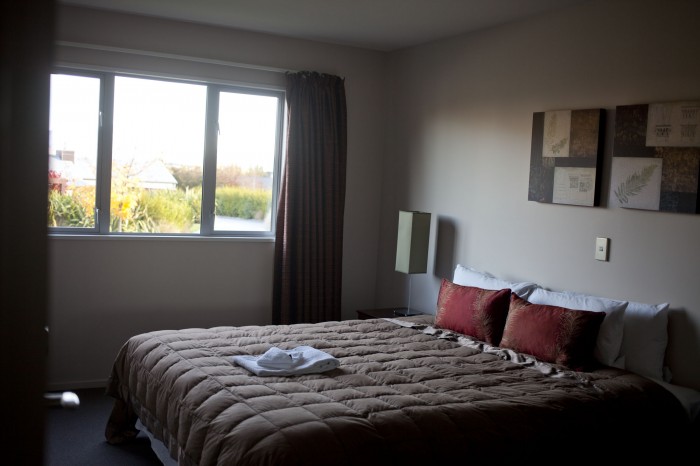
Many long term traveling families opt to stay in apartments and rent them out for weeks or months at a time. By doing so, they get a discount which brings the nightly overall price down considerably. While staying in hotels can be a nice treat, there’s not as much space in the majority of them as you would normally have at home or in an apartment and that can be particularly challenging if you’re sharing the space with a friend, partner or your family. Apartments generally have 2-3 times as much space as a long stay hotel suite – this is a huge difference! Staying in an apartment means that you have extra space so that you can live comfortably while you travel. Whether you need accommodation for a week long skiing trip in Wanaka or are spending a month living in Berlin, renting an apartment can be a great option.
You get to feel like a local
Hotels tend to be located right in the heart of tourist centers, and while many rentable apartments are centrally located, a number of them are hidden in lovely little neighborhoods, allowing you to really inject yourself into the city you’re visiting. When staying in hotels, I’ve often just been really, really lazy and just eaten at the hotel’s restaurant or ordered room service. Staying in an apartment means that you are much more tempted to get out and explore little restaurants and cafes – which is half the charm of traveling.
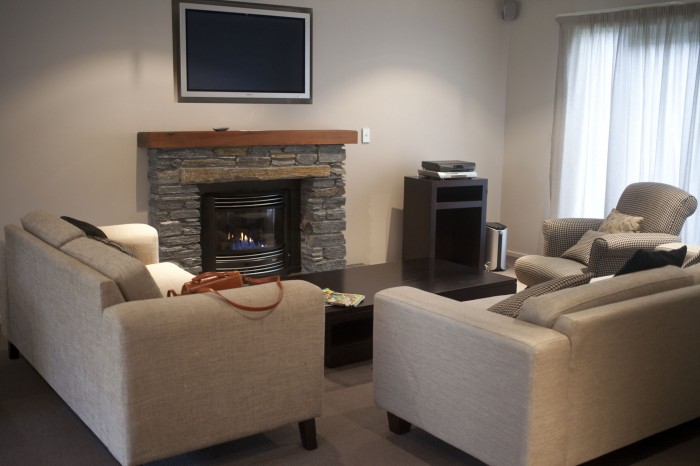
You’ll get more privacy
When I’ve stayed in hotels there’s a lot of interaction with the hotel staff, from every day room cleaning to chitchat when you’re entering or leaving the hotel lobby. At times, this can be quite nice, but I find that it doesn’t allow me to relax as much. Staying in apartments is quite different: generally you pick up the keys, get a nice introduction and then you are free to come and go as you please. I think this makes a huge difference and can let you feel more ‘settled’ in, rather than as if you’re just a visitor.
How to find short term apartments to rent
Because apartments are becoming such popular choices for people wanting comfort, they are popping up on more and more booking sites. You can browse for apartments on discount booking sites like Wotif.com or even specialized apartment sites like airbnb.com.
I thoroughly enjoyed my stay at Arrowfield Apartments in Arrowtown and hope to spend more time traveling in apartments instead of hotels or hostels.
Have you ever stayed in an apartment? What was your experience like?
Canada Day – A Perfect Time to Visit
My wife and I like to take vacations abroad. We have been to places around the world such as Jerusalem, New York City, Tokyo, Sydney and Mexico City. As we were discussing our summer vacation plans, we were stumped. We were not sure where to go until a co-worker of mine suggested that we go to Canada for Canada Day. Honestly, we did not know very much about the holiday, but were interested in going to a different country and joining in their festivities.

There are many great places to visit in Canada and I had always wanted to go to Toronto. I think the reason was since I liked the professional baseball team the Toronto Blue Jays. Anyway, we boarded the plane and flew to Toronto a few days before Canada Day was celebrated. We purchased a few books and informational guides about the history of the celebration. We learned that the celebration began on July 1, 1867 with the colonies of New Brunswick, Nova Scotia and the Province of Canada becoming the country of Canada. Although it became a country, it was under the umbrella of the British Empire until 1982, when it officially became entirely independent. Many businesses close on July 1 in honor of the celebration.
My wife and I discussed where we wanted to stay. Toronto has plenty of places to lodge such as international hotel chains, bed and breakfasts, local motels and much more, like Hotel Le Germain Maple Leaf Square, One King West Hotel & Residence, The King Edward Hotel and Jare’s Place Bed & Breakfast. Eventually, we agreed upon a hotel and reserved our room a few months before Canada Day. It was a good thing we did, since many rooms were already booked. It excited me since there would be many people in the city and I liked being where events and action are.
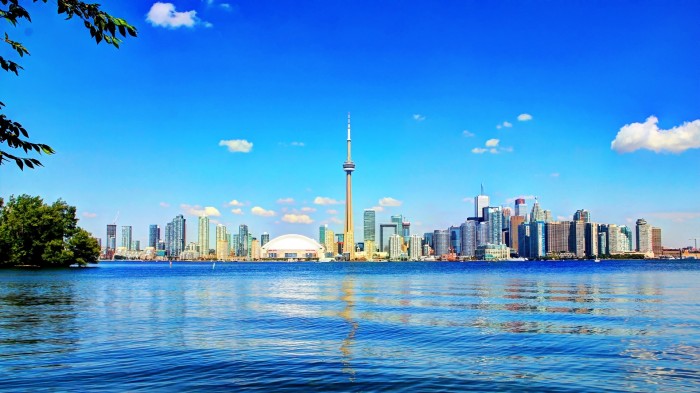
Getting to Toronto was easy, as we booked our non-stop flight to Toronto through Air Transat. After we landed and passed through customs, we decided to take a taxicab to our hotel. As we traveled, we visited with the cabbie about our excitement about exploring the city during Canada Day. He told us that this celebration was not exclusive to the city, but it was all over the country. In fact, one of the biggest celebrations is in the capital of Ottawa. At Parliament Hill, there is an amazing fireworks displays as well as live music, sports activities and much more. In addition to this, he stated that many cities and towns have festivals and parades to celebrate the Day.
We were glad to get to Toronto a few days early since we could visit various festivities. My wife and I found ourselves going to Harbourfront Centre a few times while we were in the city. There was plenty of activities and live music for everyone to enjoy for a number of days. Although we had never heard of any of the musical groups, we enjoyed the music and made it a point to purchase some songs online. In addition to this, there were plenty of street vendors who sold wares such as clothing, flags and works of art. My wife in particular was thrilled with the large amount of shops who sold merchandise at Lake View Market. We found great items for ourselves and merchandise for our family as well. Shopping and sightseeing made us hungry and there were plenty of dining options for us to visit such as local vendors who sold fried foods and local dishes. A special fireworks show was presented at the Harbourfront Centre one evening that was incredible. I am pleased to state that there was plenty of space for everyone, including children, to see the amazing display.

We wanted to go to a parade that truly gave us a taste of the true celebration of Canada Day. Therefore, we went to East York. East York is a district in the city, which has plenty of things to see and do. One of the biggest reasons that we chose to visit East York was the parade that it held each year for Canada Day. There were many floats, politicians, marching bands and other people who were in the parade. We took plenty of pictures on our digital camera as we saw entertainers and people who highlighted this special occasion. When the parade was over, we visited vendors who sold food as well as merchandise. Something that really came across to us was the wide variety of activities for children to do. There were many rides to go on, mascots to say hello to and crafts to create.
Before we went home, we stopped at Black Creek Pioneer Village, which holds a citizenship ceremony each year. There was a fee to get in, but it was worth it. I had never seen a ceremony like this one and it was wondrous to see people of many different ethnicities become Canadian citizens. It was something I will never forget. While we were in Pioneer Village, we visited the museum, walked around various gardens and said hello to friendly animals.
Our trip to Toronto to experience Canada Day was fascinating. The people were fantastic and quite friendly. There were plenty of things for us to see and do. Those and other experiences made our trip amazing. We are planning to visit Toronto again and hope to visit another city in Canada to get a new experience of Canada Day.
Queenstown City Guide
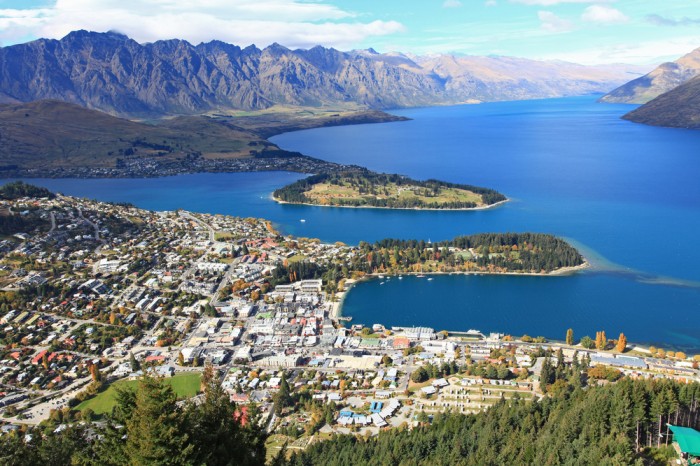
Queenstown is one of the biggest tourist hot spots in New Zealand and is definitely worth a visit. It’s often thought of, at least by New Zealanders, as the “adventure capital” of the world. This is where bungy jumping started out and here you can jump out of a plane, off a bridge, or get in a boat that’s going at crazy speeds – whatever extreme sport you fancy.
Costs in Queenstown
Queenstown is expensive for New Zealand, and if you want to enjoy it I think it’s best to bring a pretty cushiony budget along with you. If you want to do any extreme sports, you’re looking at least $100 and sometimes well upwards. It’s worth it though.
Accommodation in Queenstown is above the national price, but it is a great place to splash out with a number of luxury and high-end hotels. If you want to stay somewhere special you could consider staying where I did, at the best hotel in Queenstown. If you’re looking for somewhere cheaper, hostels are a great place to look and there are a number of quirky hostels around the city starting at around $20.00. If you’re traveling with two or more people looking into apartments can be a great way to keep costs down while enjoying Queenstown. Arrowtown is a quaint little town not too far away that is lovely to stroll around and has slightly more affordable accommodation.
Food in Queenstown tends to be around the standard price point for New Zealand. My favourite places to eat in Queenstown are Winnie Bageos – delicious pizza and Ferg Burger. Both establishments are well known throughout New Zealand for offering hearty and delicious meals.
Transport in Queenstown is a little scarce, but it doesn’t really matter because Queenstown is easily explored on foot because it is quite compact. It is a great place to have a car though, because you can go off and explore some of the numerous walking and biking trails around. There are a number of buses that service Queenstown and taxis are easily found.
Things to do in Queenstown:
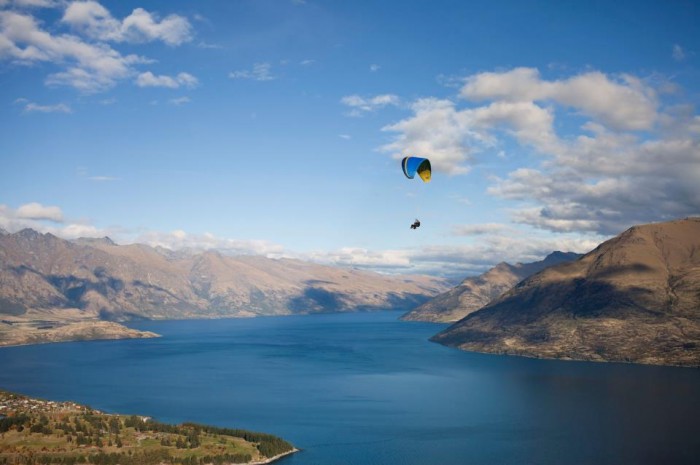
Go up the Gondola:
Yes, there are Gondolas all around the world, but few can deliver such striking views. I was completely in awe the whole way up the gondola, except for a few moments where I decided to worry it was natural for me to be up so high. Thankfully, there’s a large (sturdy) viewing platform up the top so you can spend some time enjoying the view.
Luge:
I guess I’m still a child, but luging has to be one of the most fun things I’ve done in a long time. It’s a little distracting, though, as it’s perched on top of the gondola’s viewing platform, so you’re spoiled with incredible views while you twist and turn down the luge track. Buy five rides, it is expensive but so worth it!
Bungy jumping:
I’d love to post photos of me being super brave jumping off a bridge, but I can’t – because I’m not crazy and I quite fancy being alive. Although bungys are very safe, my fear of heights and/or water prevents me from enjoying this. It’s totally worth it though, if you are an adrenalin junky. Look on Bookme.co.nz for earlybird discounts.
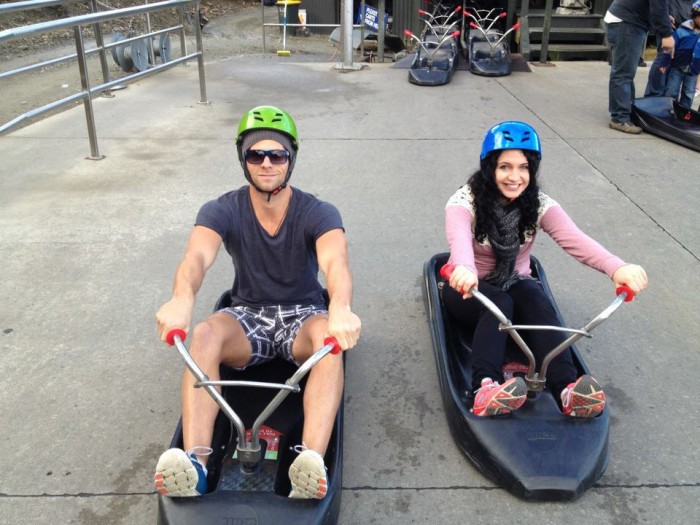
Visit an icebar:
I managed to avoid icebars in every main city I’ve been that’s housed them, I expected them to be tacky and absolutely freezing – and they are – but they’re kind of novel too. My favourite part of visiting the ice bar was smashing my glass on the way out and admiring the ridiculous ice sculptures.
Go Jetboating:
Do you like traveling at crazy speeds on water, while it’s being thrust up around the sides of the boat? Do you love adrenalin? Well, then you should definitely do some jetboating in Queenstown. Unfortunately it was a bit too chilly when I visited, but my friends have been and say it’s absolutely amazing and it’s kind of considered one of the token things to do in this adventure town!
That’s my round up of Queenstown.
Have you been before? What was your favourite thing to do there?
Top Hotels for a Family in the Sun
Want to have a lazy day at the beach? Parkim Ayaz Hotel can give you that as this hotel is just 30 seconds away from the beach! Aside from the beach they also have an amazing outdoor pool and a great selection of facilities including watersports, a climbing wall and mini-golf. You will definitely enjoy your family vacation here.
Do you want a beautiful hotel, great room, really friendly staff, and right on the beach? Tsilivi Beach Hotel will give you just that. The rooms are large, beautifully decorated and spacious, ensuring that you feel extremely relaxed on your holiday. There is a waterpark nearby and you can take the Levante speedboat trip to the shipwreck. There is also entertainment every night for the guests. This hotel makes any holiday special.
If you just want to lie in the sun (or shade) and listen to the waves breaking on the beach, then Barut Lara Resort Spa & Suites is perfect for you and your family. You will experience a one of a kind excellent service from the always smiling and courteous staff. The hotel has its own beach and jet skies. The rooms are very clean and they always have fresh fruits waiting for you at check-in.
If you’re looking for lots to do for kids this is the place, whether beach activities or in the hotel. Club MAC Alcudia is a very big hotel with free entry waterpark for everyone. Kids and kids at heart will have fun here! Aside from the Kids Corner of entertainment, the adults will enjoy being in this hotel too. The food has varieties “buffet style” and they also have themed-style nights.
Hotel Playa Costa Verde is a laid back and serene atmosphere for a vacation. The hotel retained its original designs but it is very clean and well maintained. They offer snorkelling on the beach which is great, especially for the adventurous type. The staff here are very friendly and accommodating. The hotel has a 24 hour poolside restaurant that served from breakfast till breakfast again. This is a very good place to relax and have quality time with your family.
Where I Stayed: Queenstown
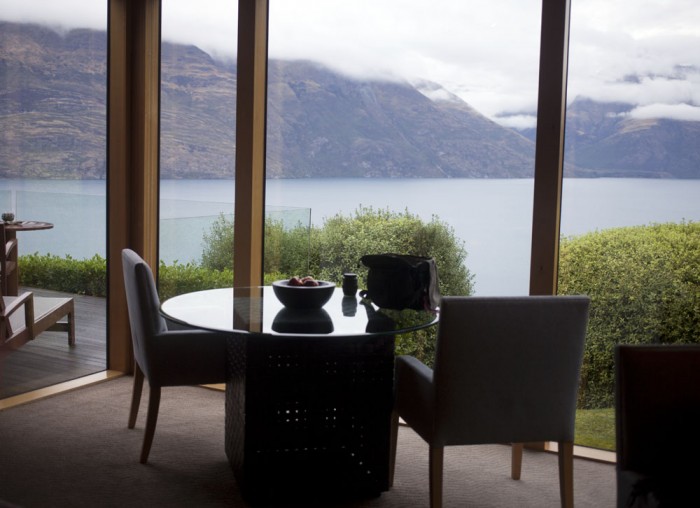
Most of my travel has been done alone, my recent trip to Queenstown was with my boyfriend. It was our first trip away together, so I wanted it to be special. Traveling as a couple is much different to traveling alone: instead of focusing on meeting people and soaking up the experiences that travel provide, you want to soak up each other’s company in a new place.
I always feel there’s a little pressure when booking a place for someone else too – you want to be certain that they’re going to love it as much as you think you will. When browsing for places to stay in Queenstown, Azur Lodge stood out. The main thing that drew me to choosing Azur was the stunning view of Lake Wakatipu and that it was rated one of the best places to stay in Queenstown on Tripadvisor.
Upon arrival to Azur, I knew I’d made the right choice. We were shown around the main lobby area, which is well appointed with a large kitchen, dining area and spacious lounge. Azur manages to perfectly balance luxury with a homelike comfort, ensuring you start to unwind from the moment you step in. From the beginning the staff make it very clear: nothing it too much trouble. Would you like afternoon tea and a bottle of wine brought to your room to settle in with? No problem. How about dinner brought in from a lovely restaurant in Queenstown and set up in your room? In villa dining can be easily arranged.
Our plan was to check in and then promptly make our way to Queenstown to do some sightseeing. After walking into our villa, with the gas fire already set and the stunning view our minds were quickly changed. Instead, we took a drink each and stood outside in awe, admiring our private view.
The rest of the villa was very spacious and comfortable with a giant bed, a lounge suite by the fire and a small kitchenette.
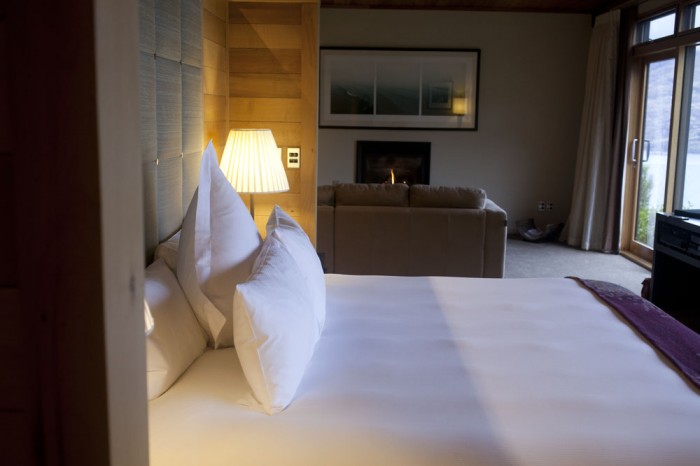
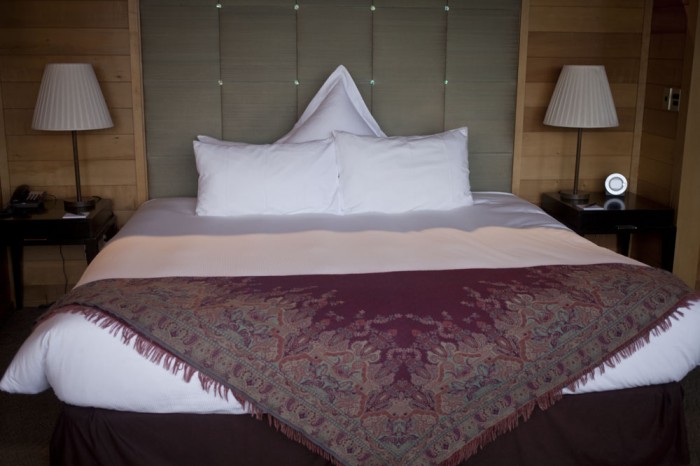
I fell in love with the bathtub – the views are just irresistible and it’s the perfect place to soak in some bubbles, while sipping on a glass of wine.
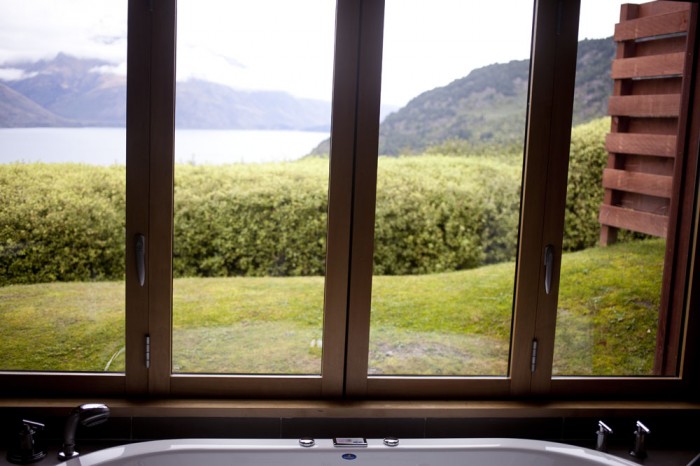
My partner and I donned our matching robes, and watched attentively as the sky slowly changed from grey and mystic, to pink and dreamy.
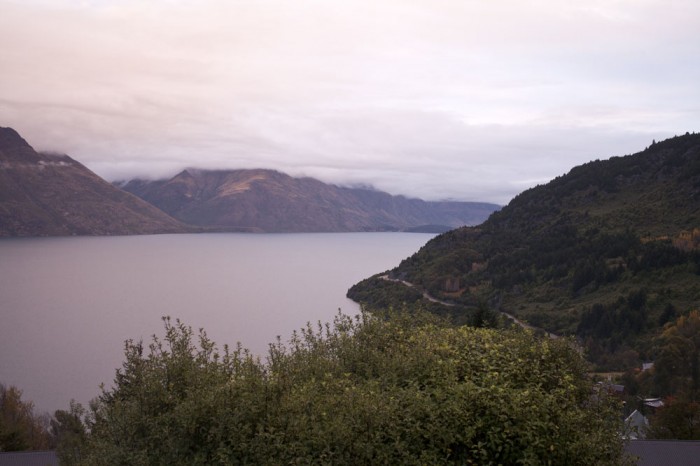
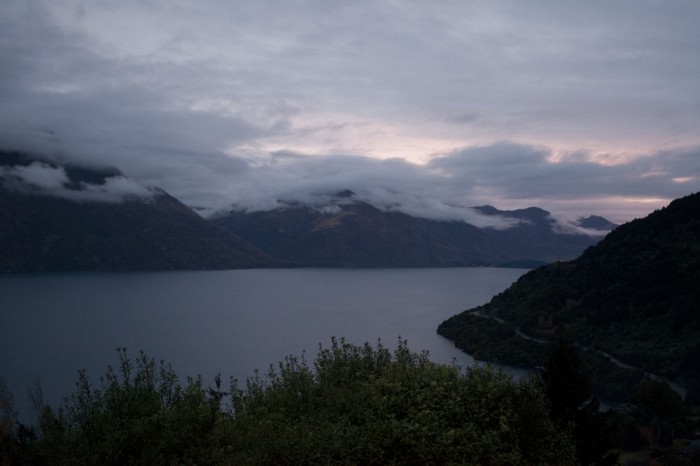
And then we decided to order complimentary canapés and wine. We had planned to drive into Queenstown for dinner, but found ourselves too comfortable and content to consider leaving our room. So we ordered gourmet pizza that was brought to us by one of Azur’s staff in a picnic basket and laid out on our table. The rest of the evening passed enjoying each other’s company and we awoke to the same breathtaking scene we’d seen the night before.
I’ve never stayed somewhere that I found so irresistible I wasn’t tempted to venture out and explore. I would have to agree with the ratings that Azur has earned, it is definitely the best place to stay in Queenstown and definitely makes the list of my favourite hotels I’ve stayed in.
It was the perfect way to start my trip away with my partner and exactly the kind of relaxing holiday I’ve been wishing for.
Where is your favourite hotel? Have you stayed somewhere very memorable?
Finding Travel Inspiration
I’ve been home for a few months now, and while I’m happy to be exploring more of New Zealand (posts on Arrowtown and Queenstown to come) it can be hard to keep the travel dream alive while focusing on the more mundane aspects of life – working and saving. After 2.5 years cruising around the world, being constantly stimulated by a variety of new experiences, being still can be quite challenging.

I spend a lot of time browsing finding travel inspiration, to keep my dream alive. My ultimate goal is to work towards a life where I am not bound to any location and free to explore at my own will. That’s my dream. I could pack up right now and travel for another year or so, but eventually I’d reach a point where I’d have to come back home and start again. So, I’m busy laying the foundations now so that I can eventually become a real nomad.
I spend a little too much time browsing websites, mostly travel related. I get lost in stories of adventures, or places to visit. I’ve probably spent more time on the Lonely Planet website than I have any other website, finding myself mentally inserting myself into pictures that grace the homepage.

The other day my friend sent me a cool music video, which features one of the most amazing natural phenomena I’m yet to see: the Northern Lights. I’ve always wanted to visit Norway to see them, but this video actually features them as seen in Swedish Lapland. This video is all focused around the Northern Lights, has a cool soundtrack with it and shows off how advanced Sony smartphones are getting.
If you’re looking for some travel inspiration, this one is definitely worth a watch!
There’s also a making of video so you can soak in the scenery for a bit longer:
What do you use as travel inspiration?

